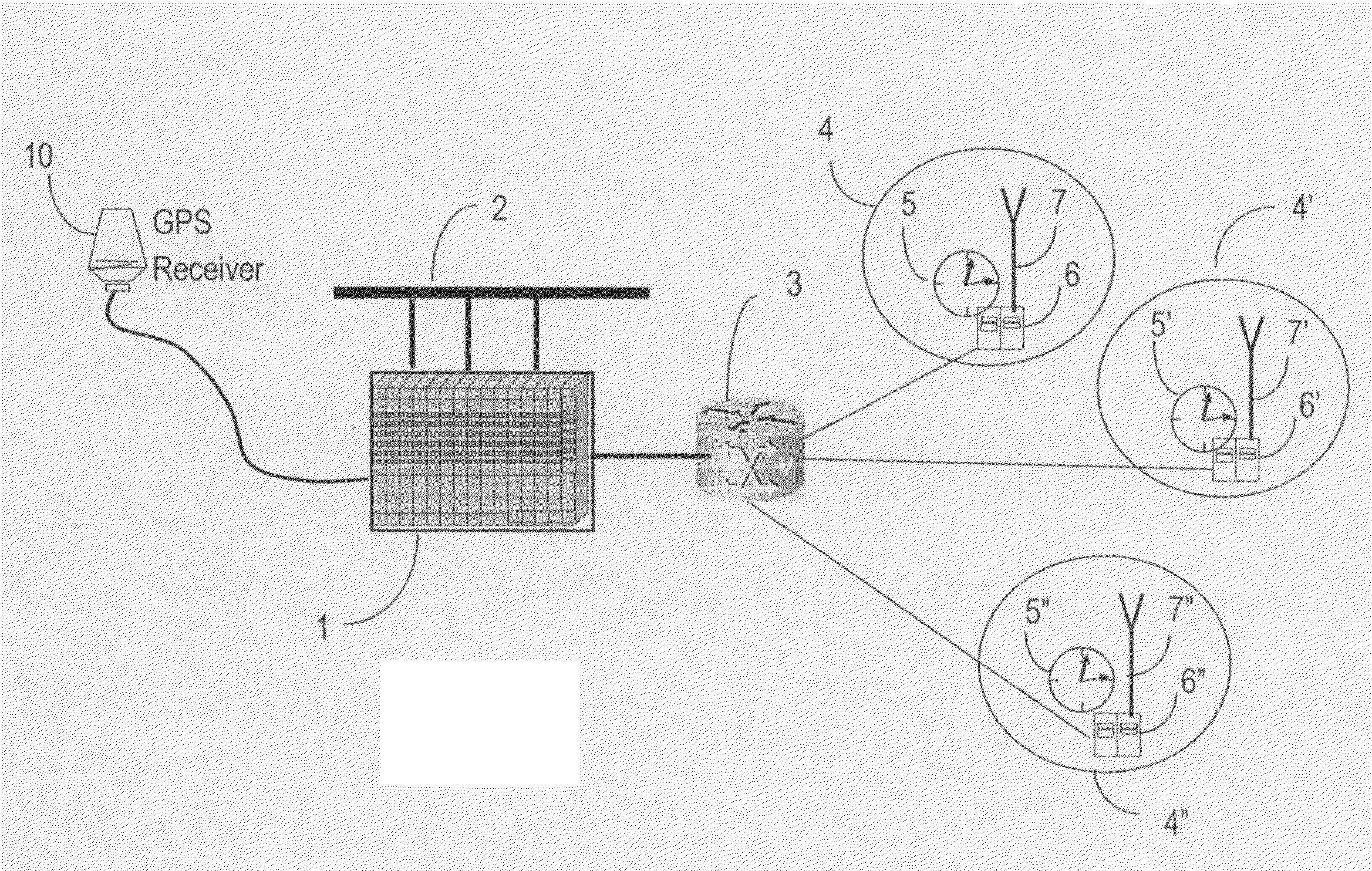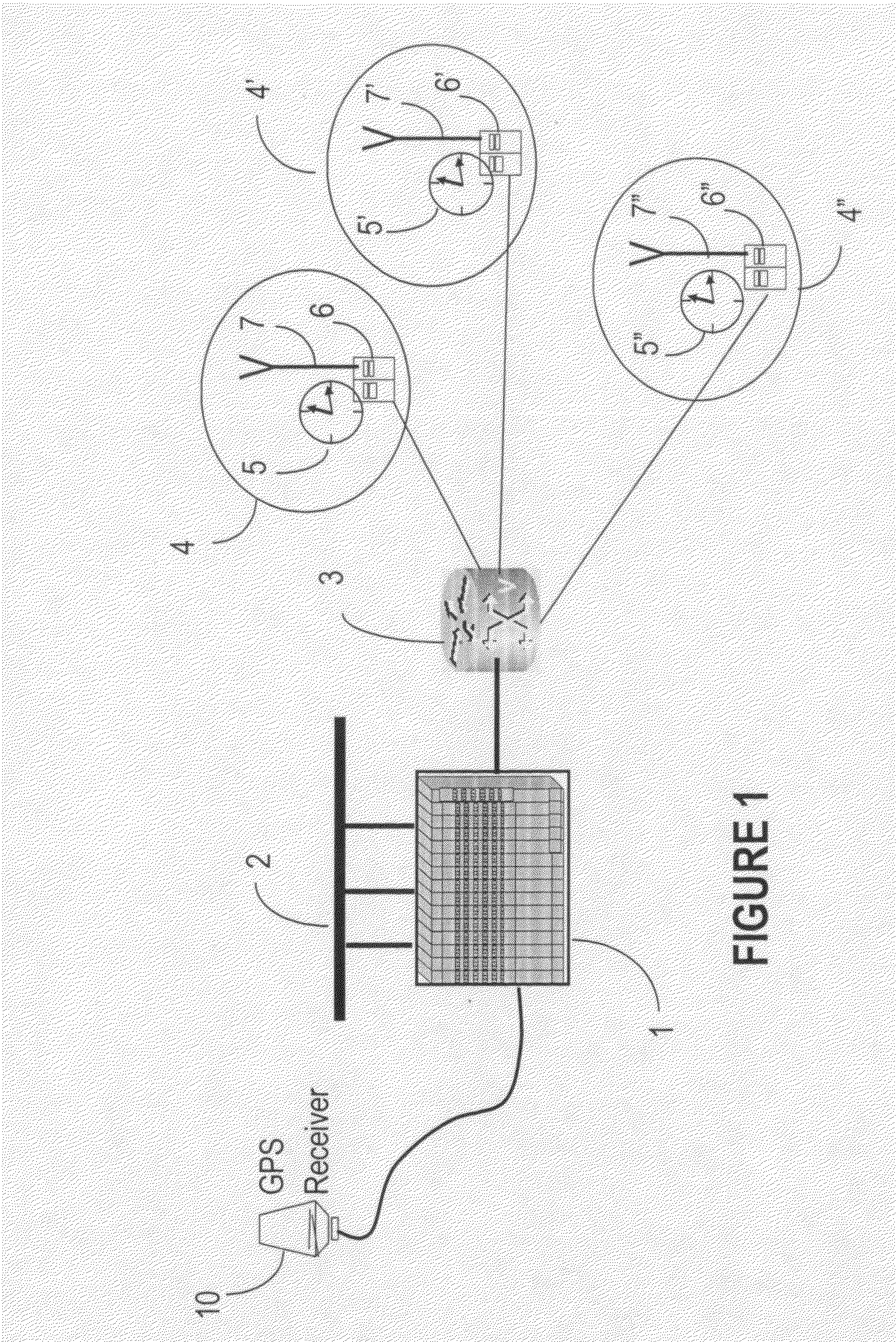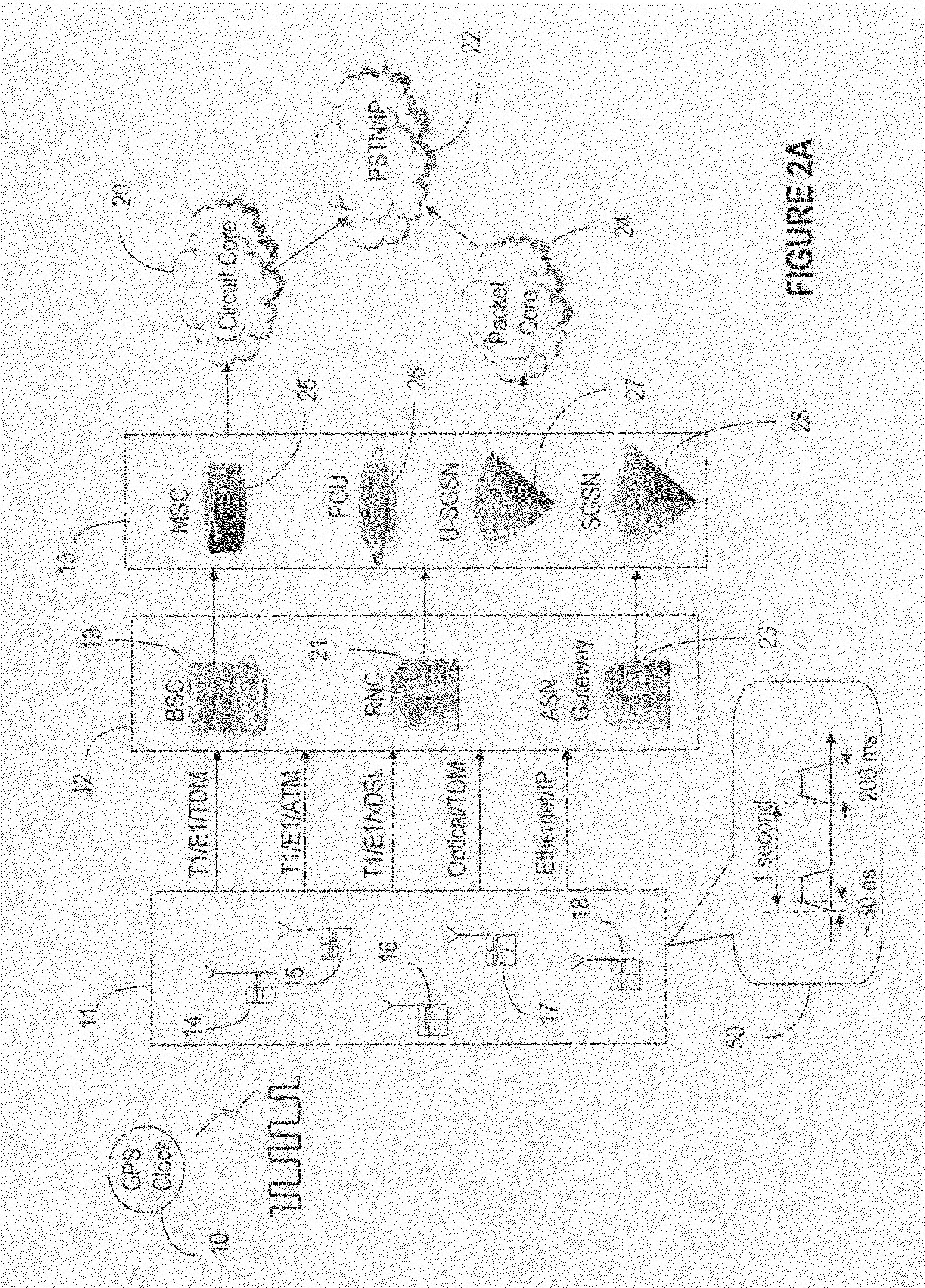Systems and methods for distributing GPS clock to communications devices
a technology of communication devices and gps clocks, applied in the field of communication networks, can solve the problems of unsatisfactory service quality, manufacturers and providers are skeptical of using, and the current version of ntp does not meet the higher precision requirements of internet evolution, so as to improve the quality of service, and reduce the effect of dropped frames
- Summary
- Abstract
- Description
- Claims
- Application Information
AI Technical Summary
Benefits of technology
Problems solved by technology
Method used
Image
Examples
Embodiment Construction
[0032]FIG. 1 shows a block diagram of a clock distribution system that uses IEEE 1588. The master clock in this architecture is a GPS clock 10, provided at a node 1. Node 1 distributes the GPS master clock 10 to slave IEEE 1588 PTP clocks 5, 5′, and 5″, each PTP clock being provided at a node 4, 4′ and 4″ in this example. Nodes 4, 4′ and 4″ could be mobile of fixed wireless nodes, as shown by the respective antennae 7, 7′ and 7″. A router or a switch 3 is used in this embodiment for establishing communication between node 1 and mobile nodes 4, 4′ and 4″. As well, FIG. 1 shows at 2 that node 1 may distribute the GPS clock to other nodes, not shown.
[0033]However, the architecture of FIG. 1 has a number of disadvantages. For example, when the GPS clock 10 becomes unavailable, the entire network looses synchronization. This drawback can be addressed by providing back-up clocks. However, such a solution is not ideal in that it increases the network costs. Another disadvantage of the sync...
PUM
 Login to View More
Login to View More Abstract
Description
Claims
Application Information
 Login to View More
Login to View More - R&D
- Intellectual Property
- Life Sciences
- Materials
- Tech Scout
- Unparalleled Data Quality
- Higher Quality Content
- 60% Fewer Hallucinations
Browse by: Latest US Patents, China's latest patents, Technical Efficacy Thesaurus, Application Domain, Technology Topic, Popular Technical Reports.
© 2025 PatSnap. All rights reserved.Legal|Privacy policy|Modern Slavery Act Transparency Statement|Sitemap|About US| Contact US: help@patsnap.com



